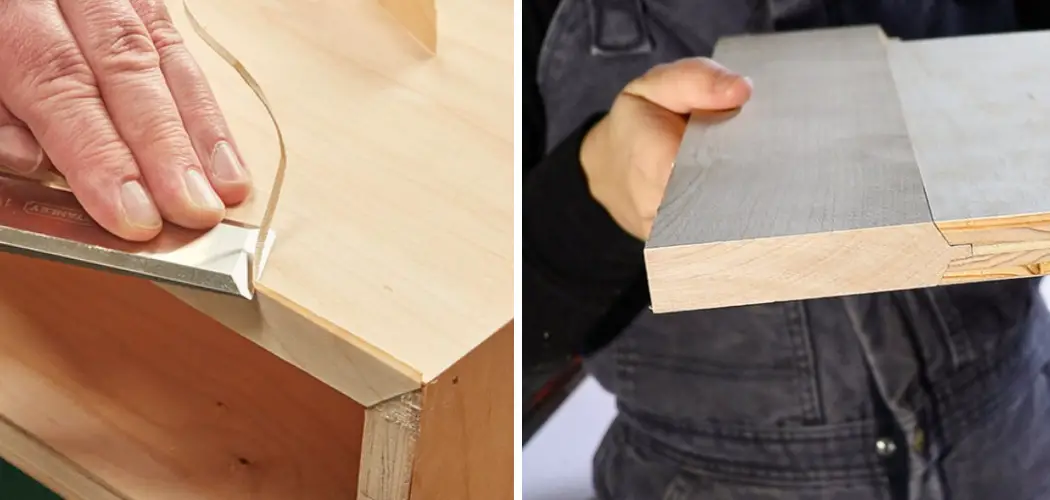Covering plywood edges with decorative materials is one of the best ways to add a creative and unique touch to any project. Are you looking for a way to add the perfect finishing touch to your craft projects? Or maybe you’re trying to find an inexpensive but effective way to cover plywood edges and create an attractive look.
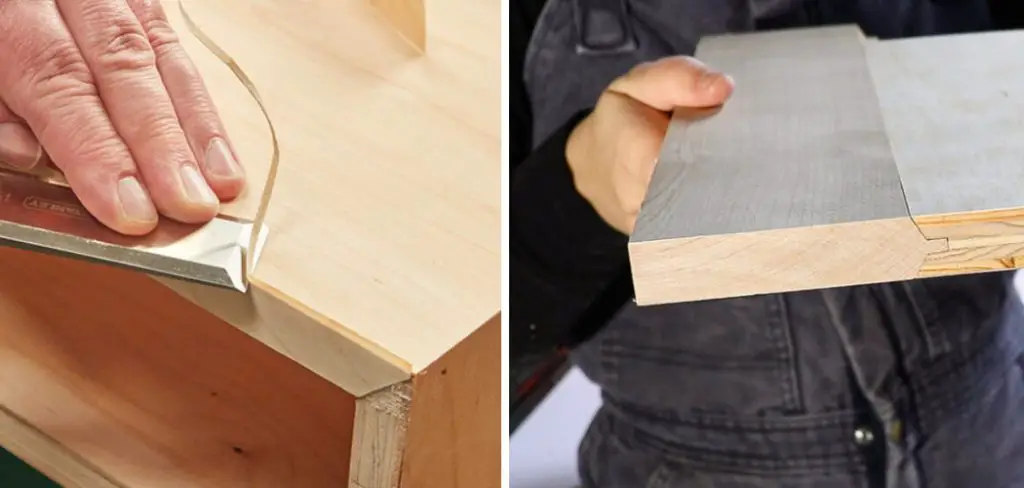
Whether you’re looking for a way to spruce up the appearance of furniture or need decorative accents that won’t break the bank, covering plywood edges is one of the most cost-effective ways of achieving stunning results.
With just some basic tools and a few simple steps, it’s easy enough for even novice DIYers to get great results. Come with us as we show how covering plywood edges is not only easy; it also adds character and style to any piece! Read on to learn more about how to cover plywood edges with a variety of materials so that you can bring new life into any space!
Why Covering Plywood Edges is Important?
Covering plywood edges is an important step in any woodworking project. Not only does it help to protect the edge of the plywood from wear and tear, but it also adds a nice aesthetic touch. By using different materials such as veneers, laminates, or paint, you can create a unique look that brings out the best in any piece.
What Materials Can I Use to Cover Plywood Edges?
When it comes to covering plywood edges, there are a few materials that can be used. Here’s a quick overview of some of the most popular options:
- Veneers- Veneers are thin slices of wood that can be attached to plywood edges and sealed with glue or nails. They come in a variety of colors and grains, making them a great choice for adding decorative accents to any project.
- Laminates- Laminate sheets are thin pieces of plastic film that can be applied directly to plywood edges and sealed in place with an adhesive. This material is extremely durable and available in a variety of colors and textures, making it ideal for projects where moisture resistance is important.
- Paint- Painting plywood edges with high-quality paint can give them a smooth, finished look. This is especially useful when creating furniture pieces where the exposed edge will be visible.
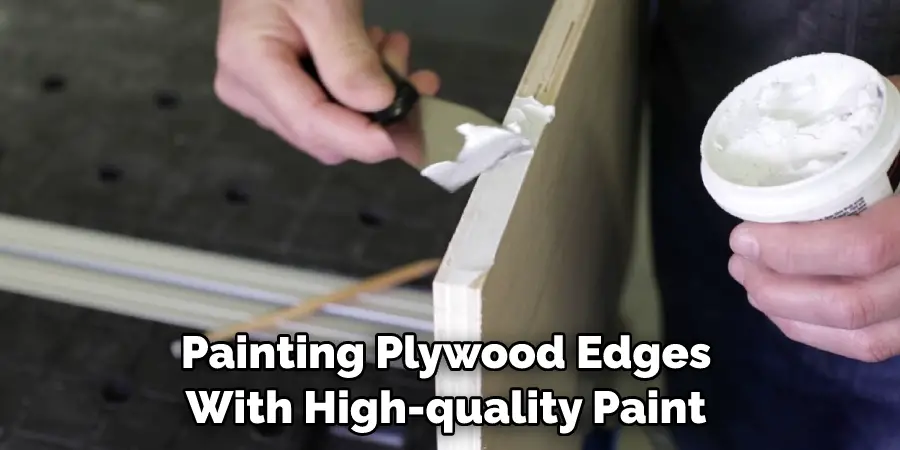
10 Ways How to Cover Plywood Edges Professionally
1. Use a Router
Use a router and edge trim to create a neat, finished look. It will give you a clean, uniform edge that looks professional. Also, you can use a router to create custom designs such as beveled edges or decorative inlays.
2. Use Veneers
Veneers are thin slices of wood that come in a variety of colors and grains. Attach them to the plywood edge with glue or nails for an attractive finish. While using veneers can be time-consuming, the results are worth the effort.
3. Cover with Laminate Sheets
Laminate sheets are thin pieces of plastic film that can be applied directly to plywood edges and sealed in place with glue or adhesive tape. This material is moisture-resistant and available in a variety of colors and textures, making it an ideal choice for projects where moisture resistance is important.
4. Paint the Edges
Painting plywood edges with high-quality paint can give them a smooth, finished look. This is especially useful when creating furniture pieces where the exposed edge will be visible. The edges can be painted before or after they are cut, and a variety of colors and patterns can be used to create a unique look.
5. Add Trim
Trim is an easy way to cover plywood edges with a decorative touch. Choose from a wide variety of trim pieces such as moldings, corners, or even just strips of wood.
6. Use Iron-On Edging
Iron-on edging is a great way to give plywood edges a neat, finished look. Simply cut the edging material to size and use an iron to heat it up and adhere it to the edge of the plywood. Iron can also be used to create decorative patterns along the edge of the plywood.
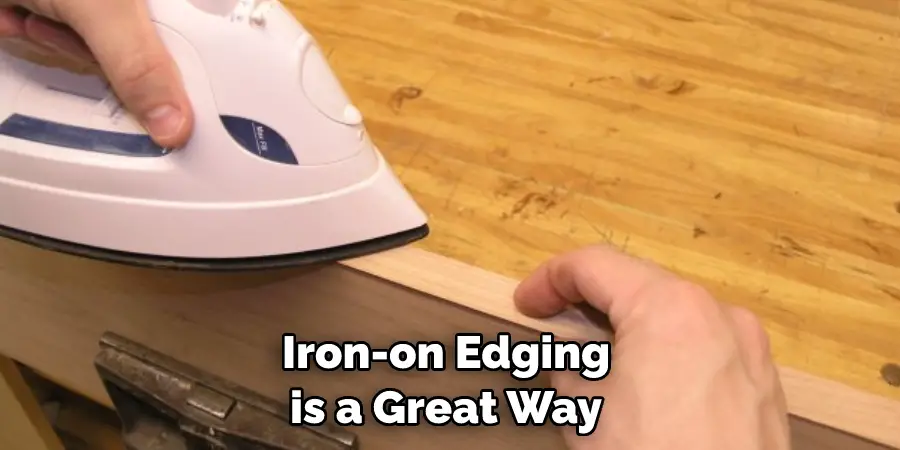
7. Use a Hot Glue Gun
A hot glue gun is an easy way to cover plywood edges with a decorative touch. Simply apply the glue to the edge and then attach a variety of materials such as fabric, ribbon, or even small objects like buttons or beads.
8. Use Carpet Tape
Carpet tape is an adhesive material that can be used to cover plywood edges with a decorative touch. Simply cut the carpet tape to size and then adhere it directly to the edge of the plywood. Tape will be visible when it is applied but can be painted over for a more finished look.
9. Use a Table Saw
A table saw is an excellent tool to use for creating clean, smooth edges on plywood projects. Start by setting the blade depth to the desired depth and then slowly run the edge of the plywood across the blade to create a neat, finished edge.
10. Use Sandpaper
Sandpaper is an excellent way to cover plywood edges and give them a smooth, finished look. Simply start with a coarse grit sandpaper and gradually work your way up to finer grits until the desired finish is achieved. Be sure to use proper safety precautions when using sandpaper on plywood.
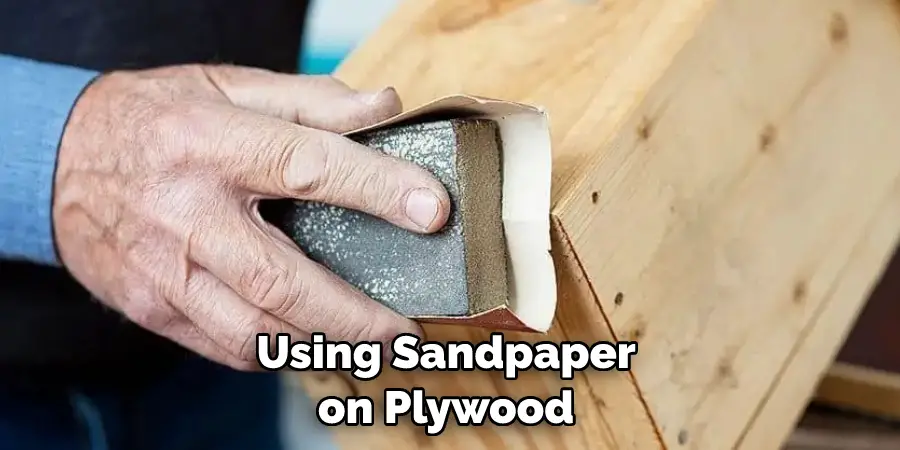
These are just some of the ways to cover plywood edges professionally, but there are many more options available depending on your project needs. Be sure to take the time to explore all of your options before beginning any project. With a little bit of research and planning, you can create an attractive finish that is both practical and stylish.
8 Safety Precautions to Follow When Covering Plywood Edges
When you need to cover plywood edges, it is important to take certain safety precautions to ensure that the job is done correctly and safely. Here are 8 safety precautions to follow when covering plywood edges:
- Wear Safety Gear always. Make sure you have all of the necessary personal protective gear, such as gloves, safety glasses, and a dust mask, when working with plywood. Also, wear long sleeves and pants to protect your skin from splinters.
- Make sure the work area is well-ventilated. Working with plywood can be very dusty, so make sure that you open windows or use a fan to keep dust particles from getting into your lungs by breathing it in.
- Make sure your tools are in good condition. Check the blades on saws and other sharp tools to make sure they are not chipped or bent before using them. The tools are the main source of injury when working with plywood, so it is important to make sure that they are in top shape.
- Use clamps to secure the material while cutting. Make sure that you use clamps or other holding devices to keep the plywood in place while sawing or using power tools on it. This will help prevent the material from moving and causing an accident.
- Don’t cut too deep into the plywood. Make sure that you set a depth limit for cutting so that you don’t accidentally go too deep and make a mess of your project. Cutting too deep can also cause the material to splinter and create jagged edges.
- Use sandpaper for fine detail work. Sanding is necessary for creating smooth edges when covering plywood, so make sure that you use high-grit sandpaper and take your time so that you don’t accidentally ruin the job or hurt yourself.
- Wear a dust mask when sanding. Sanding creates a lot of dust particles, so make sure that you wear a dust mask to protect your lungs from the harmful particles that are created by sanding plywood.
- Clean up after yourself. Always clean up after yourself and put away all tools properly before leaving the work area. This will help to keep you and others safe from any potential accidents.
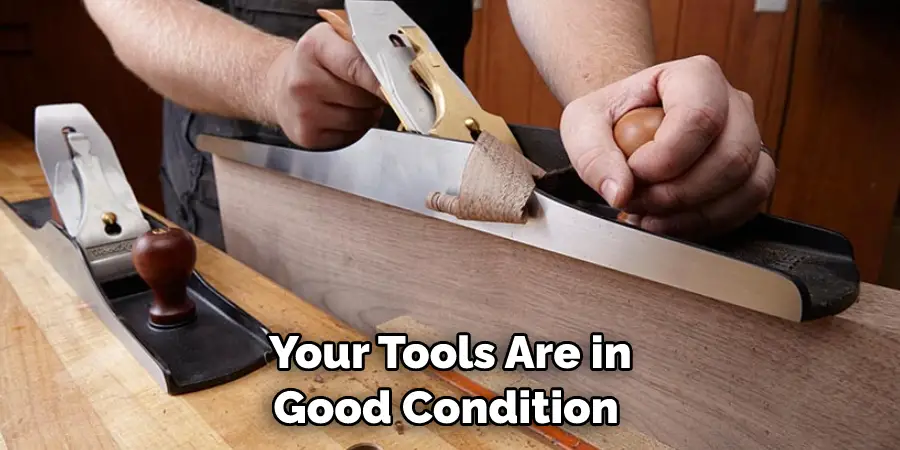
By following these 8 safety precautions, you can ensure that your job is done correctly and safely when covering plywood edges. Make sure that you take your time and use all of the necessary safety gear to avoid any potential harm or accidents.
Frequently Asked Questions
How Long Will It Take to Finish the Project?
Covering plywood edges can be time-consuming, depending on the project size. Generally, allow for at least an hour to complete the job correctly. If you are working with a large piece of plywood, it may take several hours to finish the job. It won’t take long if you’re just covering a small piece.
How Can I Keep the Edge Tape in Place?
One of the best ways to keep edge tape on plywood is to use a quality construction adhesive. This will help ensure the edge tape remains securely in place for years to come. You can also consider using clamps, screws, or staples to secure the tape if you don’t have access to an adhesive.
Conclusion
By following these easy steps on how to cover plywood edges, you can now easily cover plywood edges with ease. And, if you’re feeling really ambitious, why not add a few extra touches and embellishments to your craft item? You may want to use a router to smoothly round over the edges. Or, choose some decorative trim or molding pieces to create a beautiful frame-like appearance.
With a bit of creativity, you can make something truly unique and attractive by utilizing the plywood materials you have on hand. So get creative and take pride in your workmanship – it doesn’t matter whether it’s used for everyday functionality or an artsy statement piece. Test out different techniques and learn how to customize the look of your merchandise for a professional feel. There’s no limit to what you can do with covering plywood edges!

